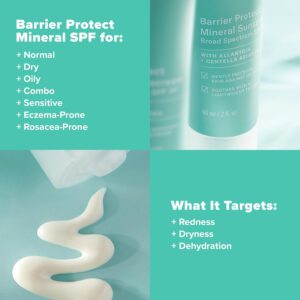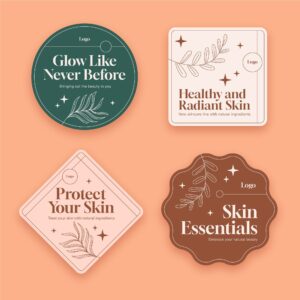When it comes to skincare, particularly anti aging and acne fighting ingredients, two of the most popular options are tretinoin and retinol. These vitamin A derivatives are part of the retinoid family, known for their impressive skin benefits.
Despite their similarities, tretinoin and retinol work differently and cater to different skincare needs. If you’re wondering which one is best for you, this article will break down their differences, benefits, side effects, and how to choose the right option for your skin type.
What Is Tretinoin?
Tretinoin (also known as all trans retinoic acid) is a prescription strength retinoid. It’s a more potent and active form of vitamin A used to treat a variety of skin conditions, including acne, signs of aging, and hyperpigmentation.
Unlike retinol, which needs to be converted into retinoic acid by the skin, tretinoin is already in its active form. This makes it faster and more effective, but it also comes with a higher risk of side effects, such as dryness, peeling, and irritation.
Tretinoin is typically prescribed under brand names such as Retin-A, Renova, and Atralin. It is available in various strengths, ranging from 0.025% to 0.1%, and should be used under the guidance of a dermatologist.
Benefits of Tretinoin:
- Treats Acne: Tretinoin helps unclog pores, reduce inflammation, and prevent future breakouts.
- Anti-Aging: It promotes collagen production, smooths fine lines and wrinkles, and improves skin elasticity.
- Improves Skin Texture: Tretinoin accelerates cell turnover, helping to fade dark spots, sun damage, and uneven texture.
- Prevents Hyperpigmentation: Regular use can help lighten discoloration and prevent new pigment issues from forming.
What Is Retinol?
Retinol is an over the counter (OTC) retinoid that is also derived from vitamin A. It’s gentler compared to tretinoin because it undergoes a two step conversion process in the skin to become active retinoic acid. While this makes it less potent, it is also more tolerable for sensitive skin or those new to retinoids.
Retinol is commonly found in a wide variety of skincare products, including serums, creams, and lotions. It’s a great entry point for people who want to reap the benefits of retinoids without the intensity of prescription strength options.
Benefits of Retinol:
- Reduces Signs of Aging: Retinol stimulates collagen production and reduces fine lines and wrinkles over time.
- Fades Dark Spots: It improves skin tone by addressing hyperpigmentation and sun damage.
- Improves Skin Texture: Like tretinoin, retinol enhances cell turnover, giving the skin a smoother appearance.
- Minimizes Acne: Retinol can help prevent clogged pores and reduce mild breakouts.
Key Differences Between Tretinoin and Retinol
While both tretinoin and retinol offer similar skin benefits, their differences lie in strength, speed, availability, and side effects.
1. Strength
Tretinoin is significantly stronger than retinol because it is already in its active form (retinoic acid). Retinol, on the other hand, needs to be converted by the skin into retinoic acid, which makes it less potent.
2. Speed of Results
Since tretinoin works directly as retinoic acid, it delivers faster results compared to retinol. With tretinoin, you may start noticing improvements in acne and fine lines within 6–12 weeks. Retinol, being gentler, takes longer, often 12–24 weeks to show visible results.
3. Availability
- Tretinoin: Requires a prescription in most countries.
- Retinol: Available over the counter and can be found in many skincare products from drugstores and beauty retailers.
4. Skin Tolerance
Tretinoin’s potency can make it more likely to cause side effects such as dryness, redness, peeling, and irritation, particularly for those with sensitive skin or first time users. Retinol is much milder and better tolerated by most skin types.
5. Who Should Use It?
- Tretinoin: Ideal for people dealing with persistent acne, severe hyperpigmentation, or deep wrinkles, and for those seeking fast results.
- Retinol: Best for beginners, individuals with sensitive skin, or those with mild skin concerns.
Choosing the Right Option for Your Skin
Use Tretinoin If:
- You have moderate to severe acne that hasn’t responded to OTC treatments.
- You want faster results in addressing wrinkles, fine lines, or discoloration.
- Your dermatologist has prescribed it for specific skin concerns.
- You are comfortable with the potential side effects and are willing to build tolerance.
Use Retinol If:
- You are new to retinoids and want to start with a milder option.
- You have sensitive or reactive skin.
- You are looking for an affordable and easily accessible product.
- You want gradual improvement over time without the risk of significant irritation.
How to Use Tretinoin and Retinol
Whether you choose tretinoin or retinol, proper application is essential to avoid irritation and maximize results. Here are some tips:
- Start Slowly: Use the product 2–3 times per week at first, and gradually increase frequency as your skin builds tolerance.
- Apply at Night: Both tretinoin and retinol can make your skin more sensitive to sunlight. Apply them at night and always wear sunscreen during the day.
- Use a Pea Sized Amount: A little goes a long way with these potent ingredients.
- Moisturize: Follow up with a hydrating moisturizer to minimize dryness and irritation.
- Avoid Mixing with Certain Ingredients: Avoid using tretinoin or retinol with other strong actives like benzoyl peroxide, AHAs/BHAs, or vitamin C in the same routine.
Final Thoughts
Both tretinoin and retinol are powerful tools for achieving healthier, smoother, and younger looking skin. The choice between the two depends on your skin type, concerns, and tolerance. If you’re seeking fast, dramatic results and can handle stronger treatments, tretinoin may be the way to go. If you prefer a gentler approach with fewer side effects, retinol is an excellent option.
Before starting any retinoid, it’s always wise to consult a dermatologist, especially if you’re dealing with severe skin concerns. Whether you choose tretinoin or retinol, consistency is key to seeing lasting results.
By understanding the differences between tretinoin and retinol, you can confidently take the next step toward achieving your skincare goals.






